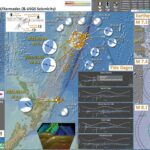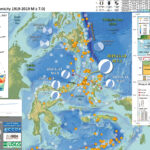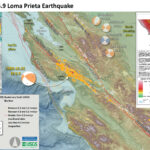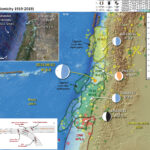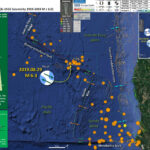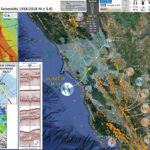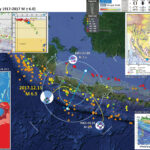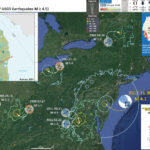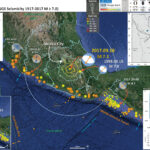I don’t always have the time to write a proper Earthquake Report. However, I prepare interpretive posters for these events. Because of this, I present Earthquake Report Lite. (but it is more than just water, like the adult beverage that…
Earthquake Report: Halmahera, Indonesia
While I was back in the Ridgecrest, CA area further documenting our slickenline observations from the 5 July 2019 M 7.1 Ridgecrest Earthquake, there was a tsunamigenic earthquake in the Molucca Sea near Halmahera, Indonesia. Some of my earliest earthquake…
Earthquake Report: 1989 Loma Prieta!
Well, I prepared this report for the 30th anniversary of the 18 Oct 1989 Loma Prieta M 6.9 earthquake in central California, a.k.a. the World Series Earthquake (it happened during the 1989 World Series game at Candlestick Park in San…
Earthquake Report: Chile
I am catching up on earthquake reports today as I was in the field the past couple of weeks… Well, these reports are getting too long. So, I have placed the explanatory material on 2 web pages, so one does…
Earthquake Report: Blanco fault
Well, these reports are getting too long. So, I have placed the explanatory material on 2 web pages, so one does not need to read through that stuff if they have been here before. I will link those pages in…
Earthquake Report: Bering Kresla Update #1
Well, the USGS updated their earthquake mechanism (moment tensor) to be more steeply dipping, showing a more vertical fault possibly. This makes more sense given the historic earthquakes in this region and our knowledge of the history of this complicated…
Earthquake Report: San Pablo Bay, CA
Well well. There was a small earthquake in the San Francisco Bay area today, with an epicenter in San Pablo Bay northwest of Richmond and San Pablo, CA. This earthquake is cool, at least in part, because of its location.…
Earthquake Report: Java!
This morning (my time) there was a deep earthquake along the subduction zone beneath Java. The M 6.5 earthquake hypocentral depth is deeper than the subduction zone megathrust fault, so it is the downgoing Australia plate (AP). My initial interpretation…
Earthquake Report: Delaware!
Today there was an earthquake in the state of Delaware, a region that does not have many mapped surface faults (I could not find any active faults in a couple hours of lit review). This area also does not have…
Earthquake Report: Puebla, Mexico
Earlier today there was a large earthquake associated in some way with the subduction zone forming the Middle America Trench. There is currently some debate about what plate this earthquake occurred within, but it appears to be an intraplate earthquake…

